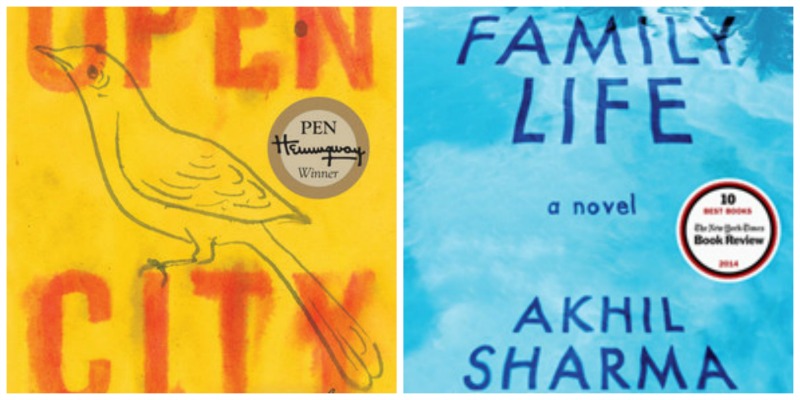The Best Books We Read in 2015: Recommendations From Literary Arts

Book Covers: Open City (Penguin Random House); Family Life (WW Norton and Co., Inc.)
Here in Literary Arts we read a lot! We read a lot of books written by our upcoming faculty and special guests and also writers who come to participate in our program and yes, even just for pure pleasure. Here is our list of our top three favourite books each that we read over this past year:
Devyani Saltzman, Director of Literary Arts
Outline by Rachel Cusk (2015 Harper Collins, paperback)
After reading Aftermath, Outline continues to show Cusk's incredible ability to get to the heart of people and the nuances of individual lives. I loved her ability to take me there.
Birth of a Bridge by Maylis de Kerangal (2014 Talon Books, translated edition)
I didn't know de Kerangal's work until introduced to it by her English translator during our translation residency. A beautifully written, fable-like narrative, set in a mythical California.
Fifteen Dogs by Andre Alexis (2015 Coach House Books)
I was struck by the precision and deep intelligence of this work. Alexis' narrative of dogs gaining human consciousness shed such an incredibly clear light on our own nature.
Jeffrey Millar, Program Coordinator
Open City by Teju Cole (2012, Random House Trade Paperbacks)
Open City engagingly meanders – the narrator, Julius, ruminates on a range of issues, but he never strays unnecessarily. Julius grapples with some of the most important political concerns of our time – climate change, immigration, terrorism, America’s racial divide and more. He also contemplates art and history, and wrestles with his past. Teju Cole’s novel doesn’t offer answers; it inspires contemplation.
My Struggle: Book 2: A Man in Love by Karl Ove Knausgaard (2014, Farrar, Straus and Giroux; Translated edition)
I’m hooked on Knausgaard’s six-part, 3500-page autobiographical novel. In Book 2, Knausgaard focuses on his relationship with his second wife and his life as a father. He tells of meeting his second wife, leaving his first, the joys and frustrations of fatherhood, and much more. Knausgaard is lauded for writing with complete honesty about his private thoughts. The praise is deserved.
The Corrections by Jonathan Franzen (2003 Harper Perennial, paperback)
Franzen hilariously depicts a Midwestern family. The kids have grown up and each one of them is dealing with problems – personal and professional – that are, mostly, self-inflicted. As we get to know the grown-up children, we see how their personalities have been shaped by their parents and by each other. As we grow to understand them as characters, their problems seem to be more than simple self-inflictions; they seem inevitable.
Meghan Power, Program Coordinator
The Road by Cormac McCarthy (2006 by Knopf): This is probably one of the most chilling unsettling post-apocalyptic, dystopian novels ever written. It’s depressing and disturbing with a small glimmer of human resilience at the end.
Ladykiller by Charlotte Gill (2005, Thomas Allen & Son): This is a collection of wonderfully weird stories with strange and beautifully fractured characters. I know I’m late to the table reading this one; but I finally did and it immediately jumped to the top of my favourite short story collection list.
Family Life: A Novel by Akhil Sharma (2015, WW Norton): The novel is a dark tale about Ajay and his family, who move from India to the United States. Ajay's fate becomes entwined with his older brother’s tragic misfortune, leading Ajay into an obsessive pursuit the American Dream.